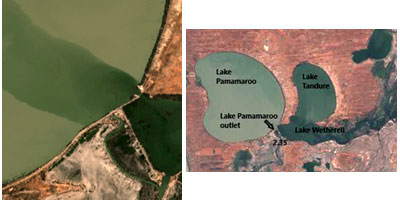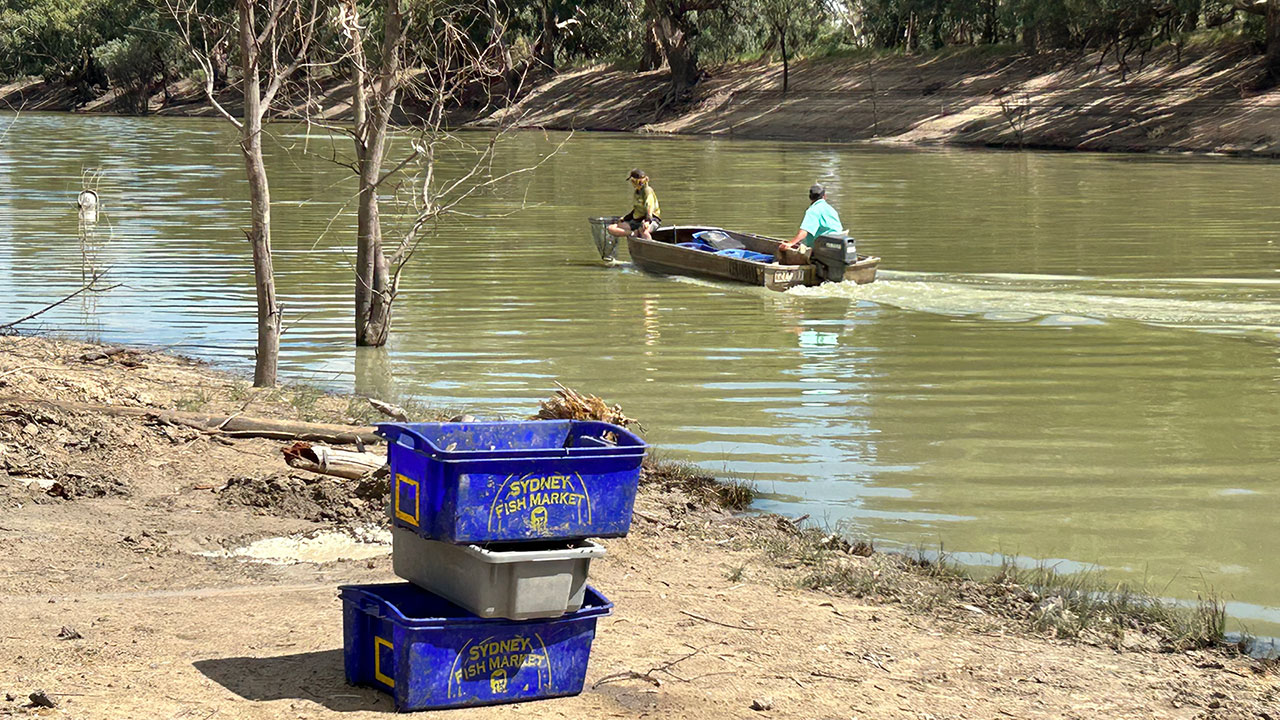What happened in the Barwon and Darling-Baaka Rivers in 2022-23?
The following is a brief snapshot of the evolving blackwater event since Spring 2022.
- From September 2022, dissolved oxygen levels were declining in some inland NSW rivers as the weather started to warm up, increasing the risk of fish deaths.
- Low dissolved oxygen levels, caused by hypoxic blackwater, were first seen near Walgett in the Barwon Darling.
- NSW and Commonwealth water agencies worked (and are still working) closely together to monitor and actively manage the situation with releases of better-quality water.
- However, with large volumes of water moving from flooded floodplains bringing significant biomass including vegetation and record numbers of fish back into rivers, there is very little that can be done to prevent hypoxic blackwater developing.
- Active management of water releases from storages at Menindee into the Darling River helped to avoid major fish deaths for many months.
- Management activities included significant water quality testing at multiple locations, as well as sourcing the best available water, ie with the most oxygen, to be released downstream from storages. For example in late February, releases were stopped from Lake Wetherell (which contained hypoxic blackwater), and the regulator between Lakes Wetherell and Pamamaroo was closed to prevent hypoxic blackwater entering Lake Pamamaroo. Releases of water with good levels of dissolved oxygen were then continued from Lake Pamamaroo.

- After successive years of high flows and successful fish breeding events, extremely large numbers of fish have congregated in the reach of the Darling-Baaka River between Lake Wetherell main weir and Menindee town.
- The mass fish deaths at Menindee in Mid March 2023 are believed to be caused by hypoxia caused by a combination of hypoxica blackwater, a naturally occurring phenomenon which causes extremely low dissolved oxygen levels, an algal bloom, and significantly increased numbers of fish in the system as floodwaters receded.
- The scale of this event was also exacerbated by the hot weather in mid to late March.
- To maintain an oxygenated flow in the Darling-Baaka River through Menindee township and reduce the risk of further significant fish deaths, releases from the Lake Pamamaroo outlet are being maintained.
- Similar fish death events have also occurred elsewhere in the state in the wake of last year's record flooding, most notably along the Murray River.
- Fish deaths that are linked to hypoxic blackwater have been reported in the Barwon and Darling Rivers, as well as the southern Basin since the late 1800s. Read more about previous events.
Water quality updates are issued weekly, outlining water monitoring and management to identify potential risks to ecological communities, implement mitigating measures and respond to potential or actual mass fish death events. Read the weekly updates.
